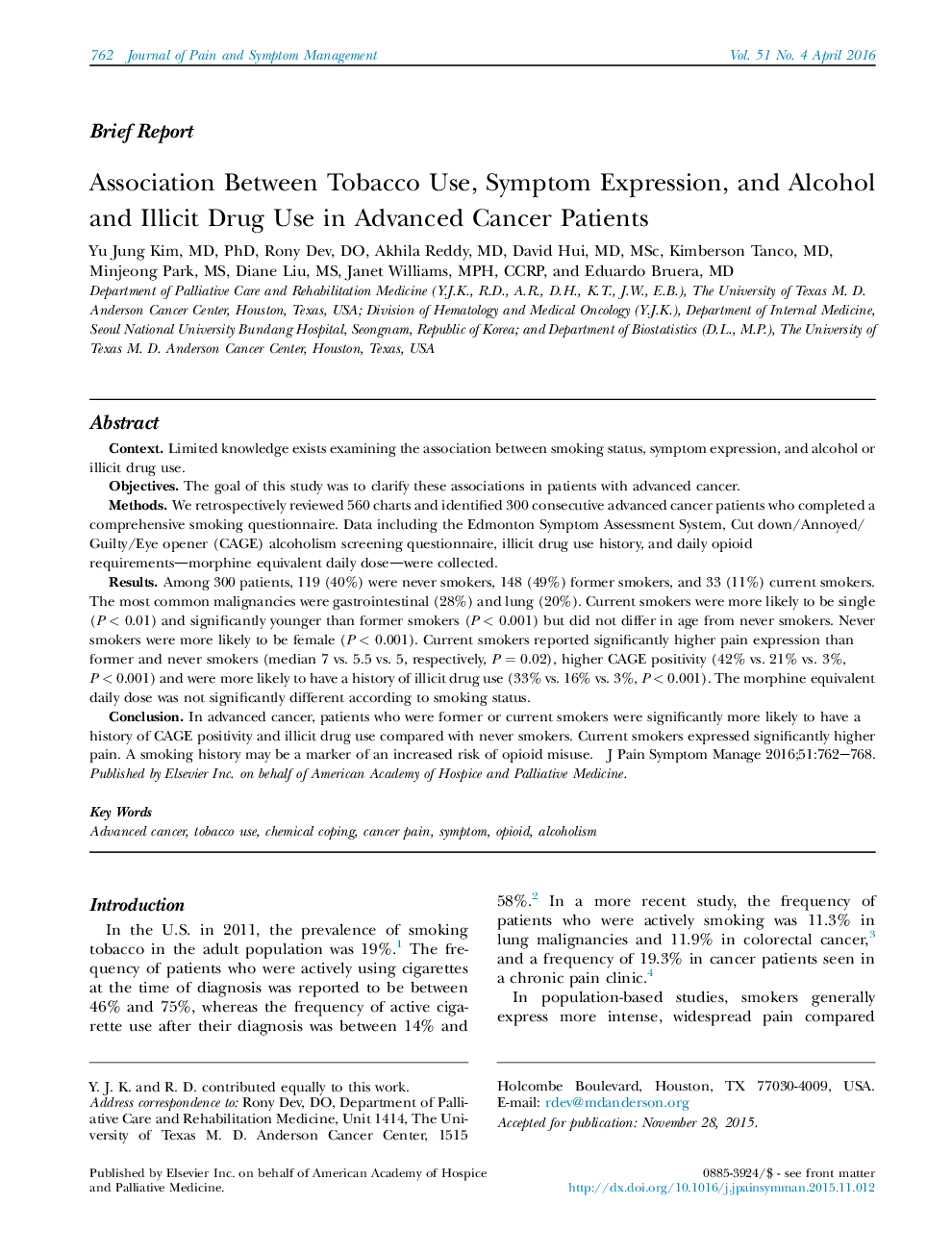| کد مقاله | کد نشریه | سال انتشار | مقاله انگلیسی | نسخه تمام متن |
|---|---|---|---|---|
| 2733646 | 1147613 | 2016 | 7 صفحه PDF | دانلود رایگان |
ContextLimited knowledge exists examining the association between smoking status, symptom expression, and alcohol or illicit drug use.ObjectivesThe goal of this study was to clarify these associations in patients with advanced cancer.MethodsWe retrospectively reviewed 560 charts and identified 300 consecutive advanced cancer patients who completed a comprehensive smoking questionnaire. Data including the Edmonton Symptom Assessment System, Cut down/Annoyed/Guilty/Eye opener (CAGE) alcoholism screening questionnaire, illicit drug use history, and daily opioid requirements—morphine equivalent daily dose—were collected.ResultsAmong 300 patients, 119 (40%) were never smokers, 148 (49%) former smokers, and 33 (11%) current smokers. The most common malignancies were gastrointestinal (28%) and lung (20%). Current smokers were more likely to be single (P < 0.01) and significantly younger than former smokers (P < 0.001) but did not differ in age from never smokers. Never smokers were more likely to be female (P < 0.001). Current smokers reported significantly higher pain expression than former and never smokers (median 7 vs. 5.5 vs. 5, respectively, P = 0.02), higher CAGE positivity (42% vs. 21% vs. 3%, P < 0.001) and were more likely to have a history of illicit drug use (33% vs. 16% vs. 3%, P < 0.001). The morphine equivalent daily dose was not significantly different according to smoking status.ConclusionIn advanced cancer, patients who were former or current smokers were significantly more likely to have a history of CAGE positivity and illicit drug use compared with never smokers. Current smokers expressed significantly higher pain. A smoking history may be a marker of an increased risk of opioid misuse.
Journal: Journal of Pain and Symptom Management - Volume 51, Issue 4, April 2016, Pages 762–768
